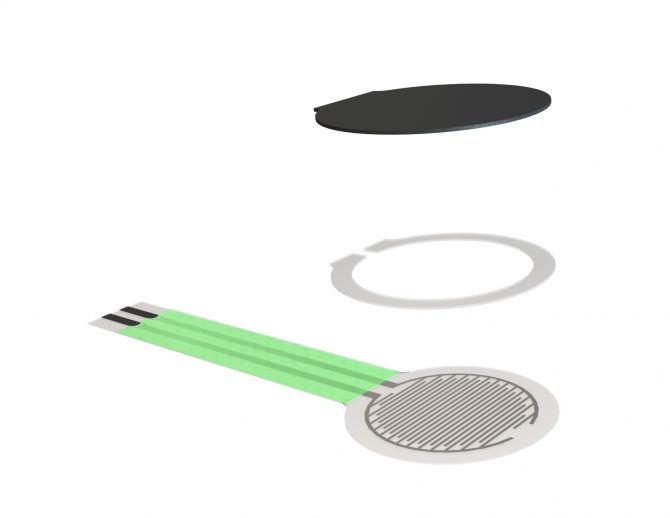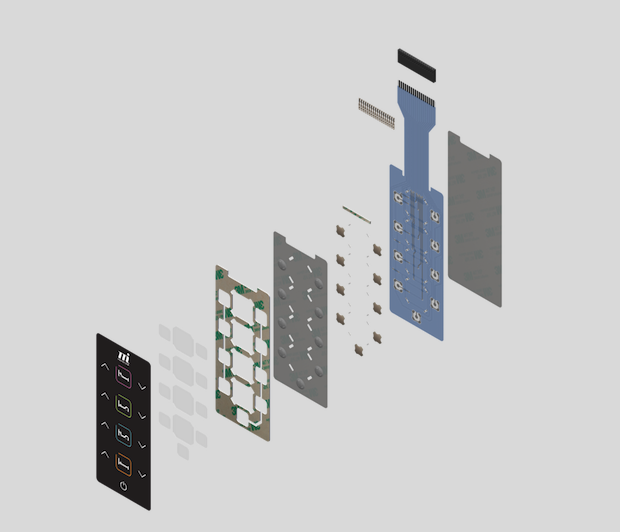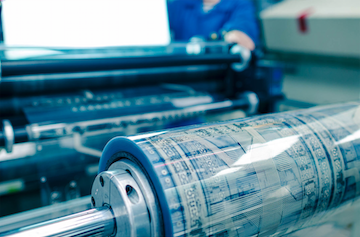
Considerations when planning your printed electronic circuit
By Memtronik, Saint-Hubert QC
Circuit Protection Electronics Printable Electronics Wearable Technology Editor PickCreating a custom HMI solution for your application
There are many innovative ways to create a custom human-machine interface (HMI) for your application. That is why it is important to have a good sense of what you are looking to accomplish – weighing aesthetics, feel, functionality and cost. To help guide your decisions, here are some considerations when developing your solution.
Determining what you want to achieve is a great starting point. Do you want a custom interface, an optimized version of an existing circuit, or simply want an update of a current design? It is preferable to be able to explain your objectives to your supplier’s designers at the outset. If they know your goals, they can offer options, explaining associated pros and cons and help you determine how to best use the available space for your keypad. Ultimately this permits you to optimize the user experience within the budget you are working with. Their expertise can be leveraged by you. Each supplier’s strengths and process will differ and, when engaged in the engineering early enough, they can help you achieve the ideal result based on your priorities and preferences.

FIG 1: Depending on the material, your membrane switch keypad’s lifespan can range from thousands to millions of interactions. Source: Memtronik
UV protection
Your new HMI should be an upgrade. Your perspectives regarding any current solution you have can be shared with your design partner, giving them a sense of what improvements are sought and which features and capabilities you wish to retain. This will guide the development plan.
Knowing how and where your circuit will be used is important because the physical environment the product will be in and who will be using it is very relevant. These circumstances will guide decisions on material selection. Is UV resistance required for exterior use? Is resistance to aggressive materials needed? What force and wear will the cover layer need to withstand? Is sunlight viewing or backlighting of keys required? How many operational cycles do you want the keypad to be rated for? What temperatures will the membrane be exposed to, and what operating range is expected? What moisture levels can be anticipated? Will users be wearing gloves? The choice of smooth or textured surfaces – including embossing (braille/rim/pillow/dome options) for improved tactile feedback, will be determined by this. The recommendation for use of LEDs, other backlighting, or 7-segment displays for visible communication will be based on these parameters.

Source: Memtronik
Regulatory needs play a key role in the construction of your design. In many instances, manufacturers must follow requirements outlined under UL94 concerning the flammability of plastic components installed in appliances, IP standards that apply to product sealing, and applicable NEMA standards. Awareness of applicable regulations and standards – MIL, Medical, FDA, UL, Automotive or other, influences how the HMI is constructed. Protecting a sensitive circuit from ESD or preventing EMI/RFI emissions determines the type of shielding required in the interface and affects the ability to get required approvals.
Optimizing yields
The interpretation of colour can be very subjective, while generally being important to the customer. The use of colour swatches or a spectrophotometer or industry standard colours is highly recommended to avoid any disappointment.
The space for your interface is typically already defined. For a perfect fit, exact measurements of the area available for your HMI must be provided to your supplier. Singulation can be extremely precise with the use of the latest laser technology. In high-volume applications a die-cut approach can be justified as well. Modern 3D modelling techniques allow engineers to preview spaces with the design of your solution to make sure everything is as it should be. The more detailed information you can provide – including tolerances, the more helpful it is! The earlier you consult with your supplier the better, as the location of cable slots in the substrate, positioning of openings, the length and location of the cable can be managed easily during the initial stages, while optimizing yields.

FIG 3: The aesthetic of a custom graphic overlay permits a wide variety of design options, creating an unique experience when interacting with the HMI. Source: Memtronik
Share your budget information at the outset. The finished product can be targeted to meet your financial objectives. Your supplier will be able to guide you in terms of what options you may entertain, and which ones would force you outside of your price range. This approach supports meeting the highest standards possible within your price range.
Consider the volume factor when costing your solution. There are initial NRE costs (non-recurring engineering charges) related to the generation of the drawings for customer sign-off and production purposes, as well as the patterns that need to be generated for the screens used for the printing steps. Those are one-time expenses – providing that the design is not changed. In addition to that, there is the cost of setting up the equipment and pastes for a printing sequence. That set-up cost is amortized over the number of units built. For one unit, the whole set-up cost is added to the production cost of the one unit. For 10,000 units, each unit has 1/10,000 of the set-up cost added. Asking for the quotation of finished product in the usage volume expected will give you a realistic sense of ongoing prices.
To help you get a sense of your options and the appearance of your unit, a 3D model or prototype of your design gives you an advanced idea at the development stage and permits you to spot anything that needs to be changed prior to production. In short, it helps you identify issues up front and minimizes costs.

FIG 4: Memtronik’s automated and highly-controlled factory can manage prototyping to large scale manufacturing.
Product evolutions
When you are ready to order, CAD or 3D files, as well as Vector files for your illustrations are usually needed to proceed. Your manufacturer might be able to offer a vector image creation and 3D modelling service that can help you with just that!
Your timeline will influence the type of HMI that suits you best. All providers work differently, so choosing the right manufacturer is essential to guarantee a streamlined process from start to finish. Raw material supply can be unpredictable, so using the standard materials typically stocked by your supplier mitigates delivery risks.
There is no harm in planning for the future. Add-ons, updates and optimizations, product evolutions are only a few things that you can begin to consider. Sharing these thoughts with your supplier can save you money and provide you with an understanding of what is achievable going forward. Do not hesitate to draw upon the expertise and know-how of your supplier’s designers. They are happy to help you and share their knowledge.
Designing and manufacturing high-quality circuits and sensors for the printed electronics, industrial and consumer industries is no easy feat. With state-of-the-art equipment and engineering, these challenges are easily managed. Companies with a long history and those with quality certifications are generally great options for you. That way your customers get to push your buttons to everyone’s great satisfaction.
———————————————–
This article was written and submitted by Memtronik, Saint-Hubert QC-based design and engineering specialists in printed electronics and user interfaces.
